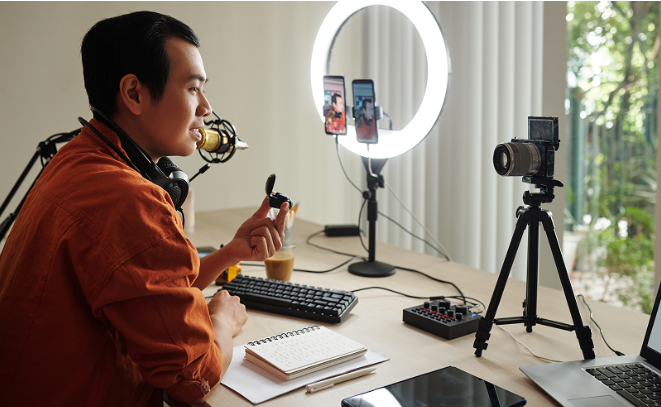From social media influencers to educators and entrepreneurs, live broadcasting has become crucial for content creators across platforms. Whether you’re sharing tutorials, hosting interviews, or live-selling products, real-time content builds stronger engagement and loyalty among your audience. However, going live is more than clicking “start.” To maintain professionalism and attract viewers, ensure you understand the basics of live broadcasting and invest in the right tools.
Understand What Live Broadcasting Involves
Live broadcasting is the real-time delivery of audio and visual content over various platforms on the Internet. Unlike pre-recorded videos, live broadcasts offer instant interaction, enabling creators to engage directly with audiences through comments, Q&As, and reactions. This format fosters authenticity and immediacy, making it highly effective for building community and trust.
While platforms like YouTube Live, Twitch, and Facebook Live make streaming accessible, creators need to consider the full scope of what live broadcasting entails. This includes stream quality, latency, audio clarity, and audience interaction. Viewers expect high-quality content, even in real-time, which makes technical preparation and reliable equipment non-negotiable.
Choose the Right Platform for Your Goals
Choosing the right channel for your live broadcasts depends on your type of content and its audience. Twitch caters to gaming and long-form entertainment, while Instagram Live and TikTok are better for short-form content and casual interaction. LinkedIn Live targets professionals and B2B audiences, while YouTube offers versatility for more formats.
Evaluate your audience’s habits. Pick a platform where they are most active by testing various features such as screen sharing, polls, or donation tools. This helps your broadcasts be interactive and accessible to your audience. Once you’ve found the right platform, stay consistent with your scheduling and content themes.
Essential Equipment for Quality Streams
Success in live broadcasting depends heavily on the tools you use. Live streaming production hardware plays a crucial role in delivering smooth, clear, and professional-looking content. At a minimum, you’ll need a stable internet connection, a high-quality camera, a microphone, and good lighting. However, for more advanced or frequent streaming, investing in production-grade hardware is advisable.
This includes video switchers, audio mixers, capture cards, and streaming encoders. These devices manage multiple video sources, integrate on-screen graphics, control audio levels, and encode your content for efficient delivery online. With proper live streaming production hardware, you can avoid glitches, delays, and quality drops that often frustrate viewers and hurt your credibility.
Plan Your Content Before Going Live
Successful live broadcasts start with strong planning. Spontaneity is part of the appeal, but unstructured streams often lose viewers quickly. Before going live, outline your key talking points, segment durations, and interactive elements. Prepare visual assets such as slides, intros, or background music in advance.
Good planning also reduces stress during streaming. It ensures you stay on topic, manage time well, and avoid awkward silences. Having a moderator or assistant can also help you monitor chats, handle questions, or troubleshoot issues without disrupting the broadcast. Viewers appreciate a well-run show, even if it’s casual.
Monitor Performance and Improve
Live broadcasting doesn’t end when the camera stops. Review your stream’s analytics, such as viewer counts, average watch time, engagement, and feedback. These insights help you understand what works and what needs improvement. Record your sessions so you can review technical aspects and identify areas where better equipment or scripting might benefit you.
Also, take note of audio levels, video transitions, and internet stability. If you notice dropped frames or lag, consider upgrading your live streaming production hardware or internet plan. Viewers rarely give second chances to streams that feel unprofessional. Constant improvement ensures audience retention and stream growth over time.
Conclusion
Live broadcasting opens powerful opportunities for content creators to connect directly with their audiences. When done right—with the proper hardware, planning, and platform—it enhances credibility, boosts engagement, and drives long-term growth. Learning the technical side and refining your delivery helps you stand out in a crowded digital space.




